12 Whole Grains That Can Help Support Weight Loss

Whole grains are high in filling nutrients, like fiber and protein, which can help you eat fewer calories and reach your weight loss goals

Burak Karademir / Getty Images
Whole grains contain all three parts of the grain kernel: the germ, the endosperm, and the bran.
Compared to refined grains, which have their germ and bran removed, whole grains are higher in fiber, protein, and certain vitamins and minerals.
Because whole grains provide filling nutrients, like fiber and protein, they are a great addition to eating patterns that may help you lose weight.
1. Steel-Cut Oats

Michelle Lee Photography / Getty Images
Steel-cut oats are higher in fiber and protein than rolled oats, making them a better choice for weight loss.
Protein and fiber help slow digestion and increase feelings of fullness after eating, which may result in eating fewer overall calories.
A quarter-cup serving of steel-cut oats contains 4 grams of fiber and 5 grams of protein, which is around twice as much as the same serving of rolled oats.
Studies have shown that eating oats is associated with weight loss and may help reduce blood sugar, cholesterol, and blood pressure levels.
2. Buckwheat
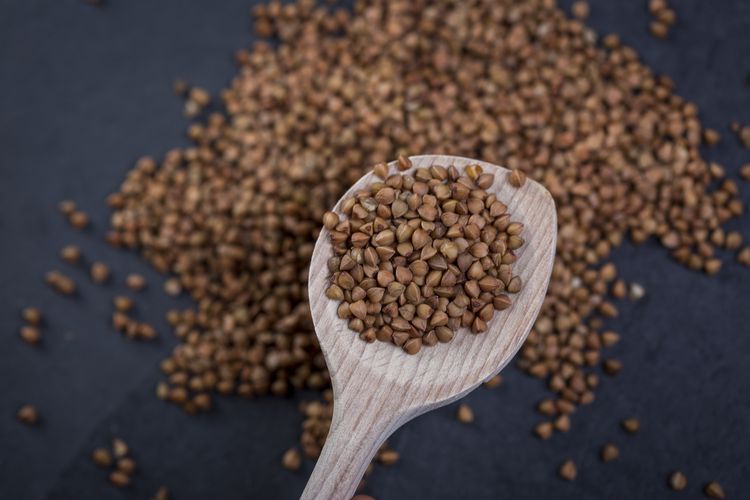
Westend61 / Getty Images
Though technically a seed, buckwheat is enjoyed in the same way as whole grains.
Buckwheat is naturally gluten-free and a good source of fiber and protein, providing 4.54 grams and 5.68 grams per cup, respectively. This makes buckwheat a more filling option than refined grains, such as white rice.
In addition to fiber and protein, buckwheat provides protective anti-inflammatory plant compounds, like flavonoids, as well as vitamins and minerals like magnesium and potassium.
3. Quinoa
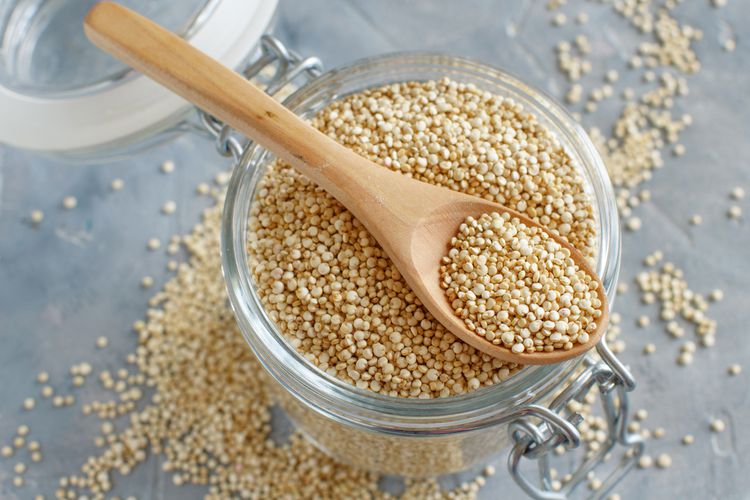
Karisssa / Getty Images
Quinoa is a pseudocereal known for its high protein content. One cup of cooked quinoa provides 8 grams of protein, making it a higher protein, plant-based source of carbohydrates that can support weight management.
Quinoa is also high in fiber, with the same serving containing 5.18 grams. Swapping grains lower in protein and fiber with quinoa may help improve feelings of fullness after eating, which can help you lose weight.
Quinoa is also gluten-free and rich in folate, magnesium, zinc, and iron, making it an overall healthy choice.
4. Brown Rice
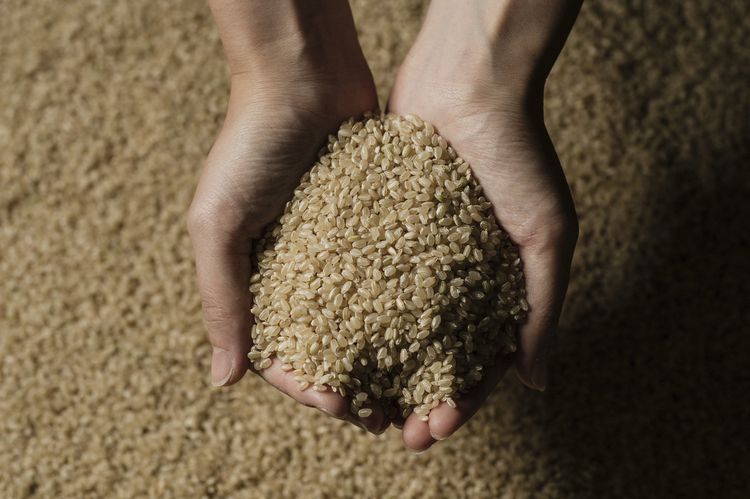
Yagi Studio / Getty Images
Brown rice is higher in protein and fiber than white rice, making it a better choice for weight loss. A cup of brown rice contains double the amount of fiber and 28% more protein than white rice.
One review found that brown rice was more effective than white rice for reducing body weight, body mass index (BMI), and waist circumference.
5. Amaranth
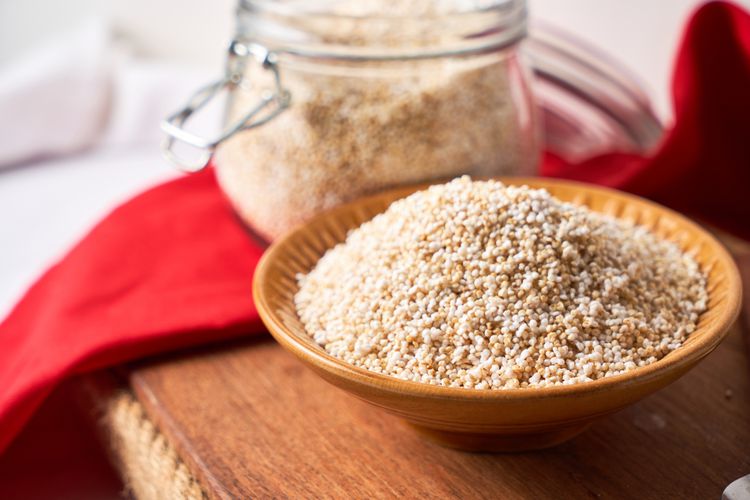
Fabian Montano / Getty Images
Amaranth is a mild-tasting pseudocereal that contains 9.35 grams of protein per cup. Eating protein-rich grains, like amaranth, could help you lose weight by supporting satiety and helping you control your calorie intake.
In addition to helping you eat fewer calories, studies show that adding amaranth to your diet may reduce heart disease factors like high cholesterol and high blood sugar.
Amaranth is also high in fiber, vitamins, and minerals, like magnesium and iron.
6. Sorghum
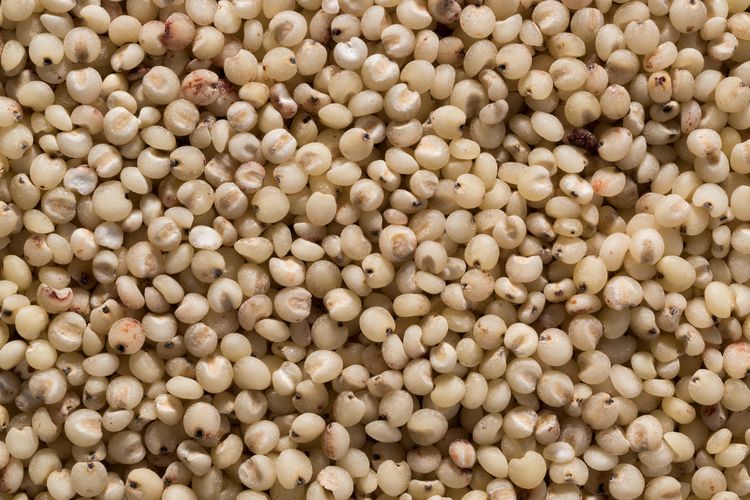
MirageC / Getty Images
Sorghum is a nutritious, gluten-free grain rich in magnesium, B vitamins, and antioxidants, including phenolic compounds. Compared to other grains, sorghum is very high in fiber, with a quarter-cup of dry sorghum containing 9 grams.
Fiber plays important roles in gut health, supporting regular and comfortable bowel movements and promoting the growth of healthy bacteria in the digestive tract.
Following a high-fiber diet is also one of the most effective ways to lose body fat and maintain a healthy weight. A study found that fiber intake was the most influential predictor of body weight, independent of calorie and macronutrient intake.
7. Teff

marekuliasz / Getty Images
Teff is an ancient grain with one of the highest protein contents of any grain, packing 9.75 grams per cooked cup. Teff is also rich in fiber, with 7 grams of fiber in the same serving.
Because teff is high in fiber and protein, it has a low glycemic index (GI), meaning it has a smaller impact on blood sugar levels compared to other carbohydrate sources. Teff has a GI of around 36.7, which is considered low.
Teff may cause a less rapid increase in blood sugar than white rice, making it a better choice for people with prediabetes or diabetes. However, blood sugar responses are complex and vary depending on the foods you pair with your grains, how much you eat, and whether you take medicine to manage your blood sugar, among other factors.
8. Freekeh
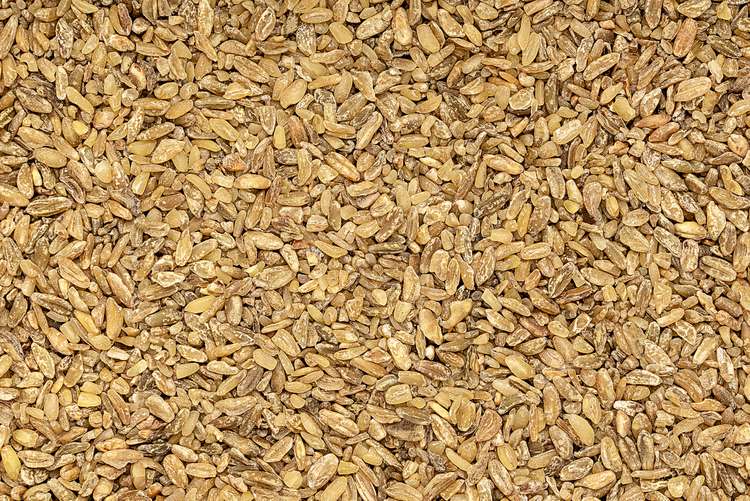
Oksana Karuniene / Getty Images
Freekeh is roasted, immature wheat that's a good source of protein and fiber. A quarter-cup of freekeh contains 5 grams of protein and 4.48 grams of fiber, helping to support weight loss.
Freekeh is also high in cell-protective antioxidants, like flavonoids and phenolic compounds. Studies show that freekeh contains about twice the amount of flavonoids and phenolic compounds as regular wheat.
Freekeh is also high in minerals, like magnesium, phosphorus, zinc, and manganese. However, it contains gluten, so it's not suitable for people with celiac disease or non-celiac gluten sensitivity (NCGS).
9. Farro
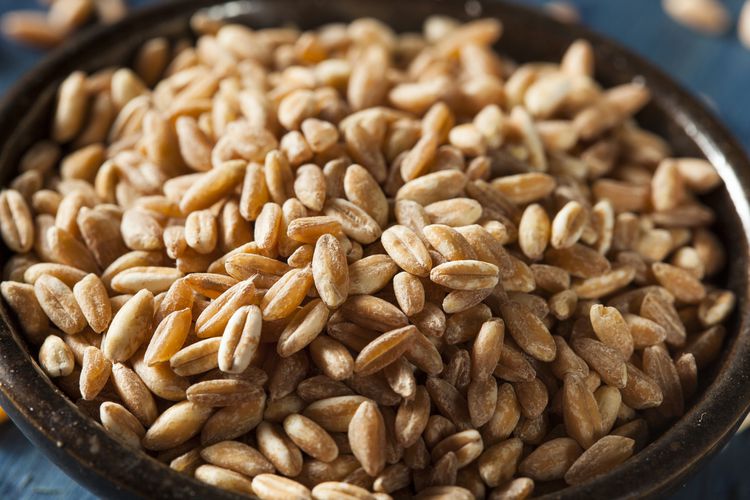
Dragos Rusu / Getty Images
Farro is an ancient whole grain. A cup of farro contains 5 grams of protein and 4 grams of fiber, making it a filling choice.
Farro is also high in minerals, like iron and potassium. It has a chewy texture and a nutty flavor, and can be used as a substitute for refined grains in salads, soups, and stews.
Since it contains gluten, people with NCGS or celiac disease should avoid farro.
11. Barley
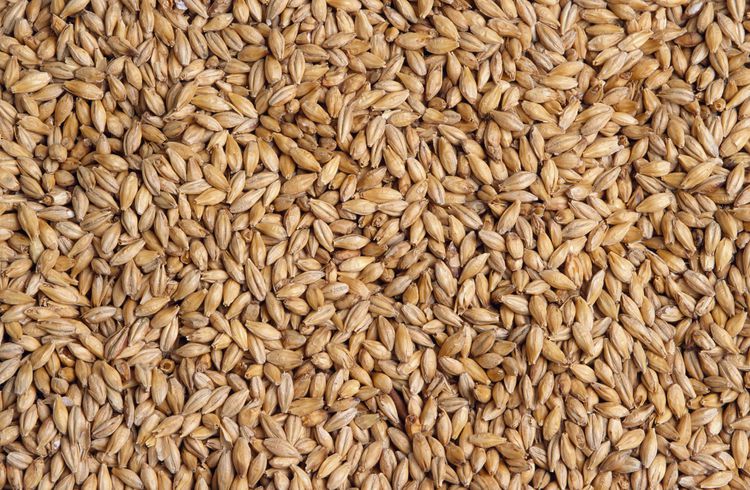
Juan Silva / Getty Images
Like farro, barley is a gluten-containing whole grain that has a hearty, chewy texture.
One cup of cooked barley provides 6 grams of fiber, making it a filling choice of carbohydrates. It's also high in several vitamins and minerals, including selenium, iron, and B vitamins.
Because barley contains gluten, it's not safe for those with gluten allergies or intolerances.
12. Bulgur

Liudmila Chernetska / Getty Images
Bulgur is a whole grain made from cracked wheat. It is packed with fiber and protein, with a cup providing 8.19 grams and 5.61 grams, respectively.
Swapping less filling carbohydrate sources for bulgur can help you feel fuller after eating, which may help you consume fewer calories.
Bulgur has a chewy texture and mild taste, making it a versatile carbohydrate source to use in main and side dishes. Bulgur contains gluten and should be avoided by those following gluten-free diets.
How To Eat Whole Grains for Weight Loss
If you're trying to lose weight, try swapping refined carbohydrates, like white bread and white rice, for whole grains. Whole grains and whole-grain products are higher in protein and fiber, which can help support weight loss.
Here's how to incorporate whole grains into your diet:
- Add whole grains to fiber-rich dishes, like salads and soups.
- Use whole grains in place of refined grains to make simple side dishes.
- Use whole grains instead of white rice to boost the fiber and protein content of your favorite recipes.
- Choose oatmeal, like steel-cut oats, over refined breakfast cereals.
- Replace white rice with brown rice, buckwheat, quinoa, or bulgur.
If your current diet is low in whole grains, try experimenting with different sources, like quinoa, teff, sorghum, buckwheat, and barley.
Though you may not like every whole grain you try, you should be able to narrow down a few favorites to incorporate into weight-loss-friendly dishes.
A Quick Review
Whole grains, like teff, barley, quinoa, oats, buckwheat, and bulgur, provide different micronutrients and more fiber than some types of refined grains.
Whole grains are high in filling nutrients, like fiber and protein, which can help you eat fewer calories and reach your weight loss goals.
This story originally appeared on: Health News - Author:Jillian Kubala, RD


















